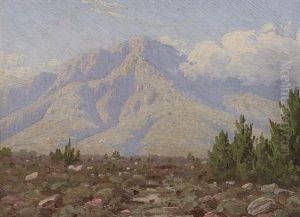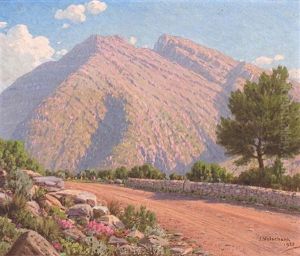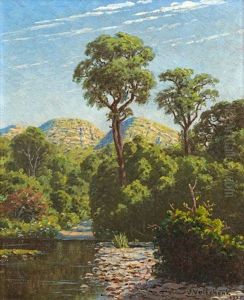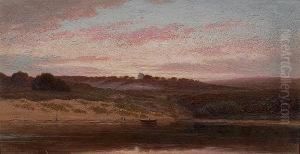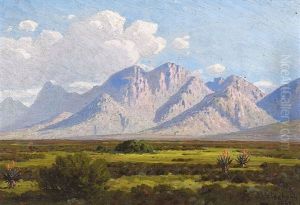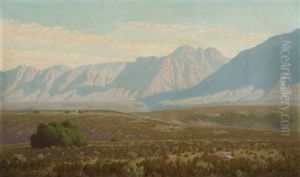Jan Ernst Abraham Volschenk Paintings
Jan Ernst Abraham Volschenk was a South African landscape painter who is best known for his realistic depiction of the South African countryside, particularly the Langeberg range in the Western Cape. Born on 20 September 1853 in Riversdale, near the Langeberg mountains, Volschenk was deeply influenced by the natural beauty surrounding his home from a young age.
He initially did not pursue an artistic career; instead, he worked in various trades, including as a merchant. However, Volschenk's passion for painting led him to develop his skills largely as an autodidact, though he did receive some guidance from Thomas William Bowler, a well-known English artist residing in South Africa at the time.
Volschenk's artistry was characterized by meticulous attention to detail and a dedication to capturing the unique light and atmosphere of the South African landscape. He had a particular affinity for scenes depicting the Langeberg mountains during different times of day and seasons, showcasing their majesty and the play of light across their surfaces. His paintings were also noted for their realistic portrayal of the local vegetation and his sophisticated use of color.
His work gained recognition during his lifetime, and he became one of the first South African-born artists to achieve fame for his landscapes. Today, Volschenk's paintings are considered important for their historical value in representing South African scenery of the late 19th and early 20th centuries.
Despite his success, Volschenk lived a relatively modest life and kept close to his roots in Riversdale, where he continued to draw inspiration from the landscapes he loved. He passed away on 3 August 1936, leaving behind a legacy of artwork that continues to be celebrated for its contribution to South African art history.




